The best electric bike for you will depend on the type of riding you want to do, so in this guide we'll cover the whole range of different electric bike types and recommend some of the best we've tested.
Our team of dedicated testers have put in hundreds of hours, riding more than 185 of the best ebikes across all categories, assessing them in real-world conditions and considering factors such as motor power, battery range, comfort and versatility.
We have outlined all categories of ebike, and included links to our detailed buyer's guide for each.
If you're looking for a more general guide to ebikes, we have included our in-depth buyer's guide to choosing the best electric bike for any rider below our suggestions, where we'll go through the things you need to consider for each category of ebike.
For even more information, take a look at our ebike FAQs.
There’s a lot to cover here, so use the links below to skip to the section you need, or read on for every detail.
Navigation
Editor's note: this list was updated on 28 January 2025 with our latest electric bike reviews, including the Whyte RHe0 3, Engwe P275 ST, Orbea Rise LT M-Team, Ribble Allroad SL R e Pro, Canyon Grizl:ONfly CF 9, Sonder El Camino Apex 1 and MiRider 24 GB3.
Best electric commuter bikes

Like a non-assisted hybrid bike, electric commuter bikes feature an upright riding position, flat bars and stable handling. They’re often the least expensive entry point into ebikes.
With lots of mounting points for accessories such as pannier bags and mudguards, electric hybrids are great if you’re planning to commute to work by bike, ride around town or want to go for leisurely rides on bike trails or through parks.
Electric commuter bikes can be quite heavy because they tend to use less sophisticated motor systems and the bikes are built for robustness. This is worth bearing in mind if you need to carry them up stairs.
Below is a selection of five of the best commuter ebikes as tested by our senior road technical editor, Warren Rossiter. For more recommendations, check out our full round-up of the best commuter hybrid bikes.
Specialized Turbo Vado SL 5.0 EQ
SQUIRREL_TEXT_13120613

- £3,400 / $4,499 / €4,300 as tested
- Pros: Lightweight; balanced handling
- Cons: Braking could be better; limited range
The Specialized Turbo Vado SL 5.0 EQ won our Urban Electric Bike of the Year 2024 award, thanks to its slick, smooth ride.
While some electric commuting bikes can be heavy cruisers, the Turbo Vado is a fast flat-barred bike with a motor from EQ for extra assistance.
EQ’s motor balances power with a respectable range of between 32 and 42 miles in testing (depending on elevation), although some may want to go longer between charges.
The bike is keenly priced, and has mounts for mudguards and a rack, making it a practical choice.
Warren would change little about the bike, even if the brakes aren’t the best of their kind.
SQUIRREL_13120613
Whyte RHe0 3
SQUIRREL_TEXT_13182133

- £2,299 / $2,815 as tested
- Pros: Great specification; fun ride character; well-priced
- Cons: Some may want more range; on-bike charging only
The RHe03 takes inspiration from Whyte's hardtail mountain bike line-up, making it confident and comfortable to ride on and off-road.
The quick steering, thanks to the wide bar and a short stem, makes the bike fun to weave through traffic on, and the low-slung mountain bike geometry keeps things stable.
We were impressed by the spec, although the square-taper cranks are somewhat dated.
It's exceptional value for money, all things considered, although some may find the down-tube mounted 250Wh battery limiting in range and versatility – not enabling off-the-bike charging.
SQUIRREL_TEXT_13182133
Cannondale Compact Neo
SQUIRREL_TEXT_13077229

- £2,000 / $1,900 / €3,499 as tested
- Pros: Exciting handling; practical; one size fits all
- Cons: Slow tyres; motor cut-off is jarring
If you’re looking for a fun yet practical ebike for getting around town, the Cannondale Compact Neo makes a great choice.
The bike is easy to like thanks to its upright ride position, wide bar, comfy saddle, rear rack and integrated lights. The tyres also inspire confidence, even if they’re not the quickest.
Elsewhere, the Microshift drivetrain and Tektro brakes are good performers and help keep this nifty bike at a reasonable price. The folding pedals and handlebar mean this bike can be packed away easily.
The small wheels and considered gearing, paired with the punchy rear-hub motor, make the Compact Neo nippy and nimble. Warren noticed the motor turned off quickly when he stopped pedalling.
SQUIRREL_13077229
Engwe P275 ST
SQUIRREL_TEXT_13163984

- £1,899 / €1,899 as tested
- Pros: Impressive range; very comfortable; incredible value
- Cons: Oversized rack rails; range prediction; limited accessories
The Engwe P275 ST features a mid-drive motor with 70Nm of peak torque connected to a huge, 691Wh Samsung Li-ion removable battery sitting in the seat tube.
This gives the bike an impressive range, with our tester realising 94.94km/58.99 miles with 845m/2,772ft of climbing on a single charge, and Engwe claiming up to a huge 260km range in eco mode, on the flat.
We found the range prediction to be a little off in testing, though.
Besides this, the bike is incredibly comfortable thanks to the 2.4in tyres and an easy-riding nature.
Despite the incredible value for money, the thickness of the rear rack rails makes fitting panniers a pain and there are limited accessories that can be used on the bike.
SQUIRREL_13163984
Merida eSpresso CC 675 EQ
SQUIRREL_TEXT_13120610

- £4,000 as tested
- Pros: Smooth and powerful motor; excellent brakes
- Cons: Chunky tyres aren’t so quick on tarmac
The Merida eSpresso CC 675 EQ is a high-quality, comfort-oriented ebike with an excellent riding position, and a great saddle and grips.
The bike has a quiet Shimano motor that delivers generous assistance at low speeds. The bar-mounted remote makes controlling the motor easy.
There is a large 675Wh battery for cruising around town and taking on rural bike paths and forest trails. A suspension fork, suspension seatpost and tough tyres aid the bike’s off-road capability.
While the bike weighs 30kg (size large), Warren found it had a generous range of up to 50 miles.
SQUIRREL_13120610
Rad Power RadRunner 3 Plus
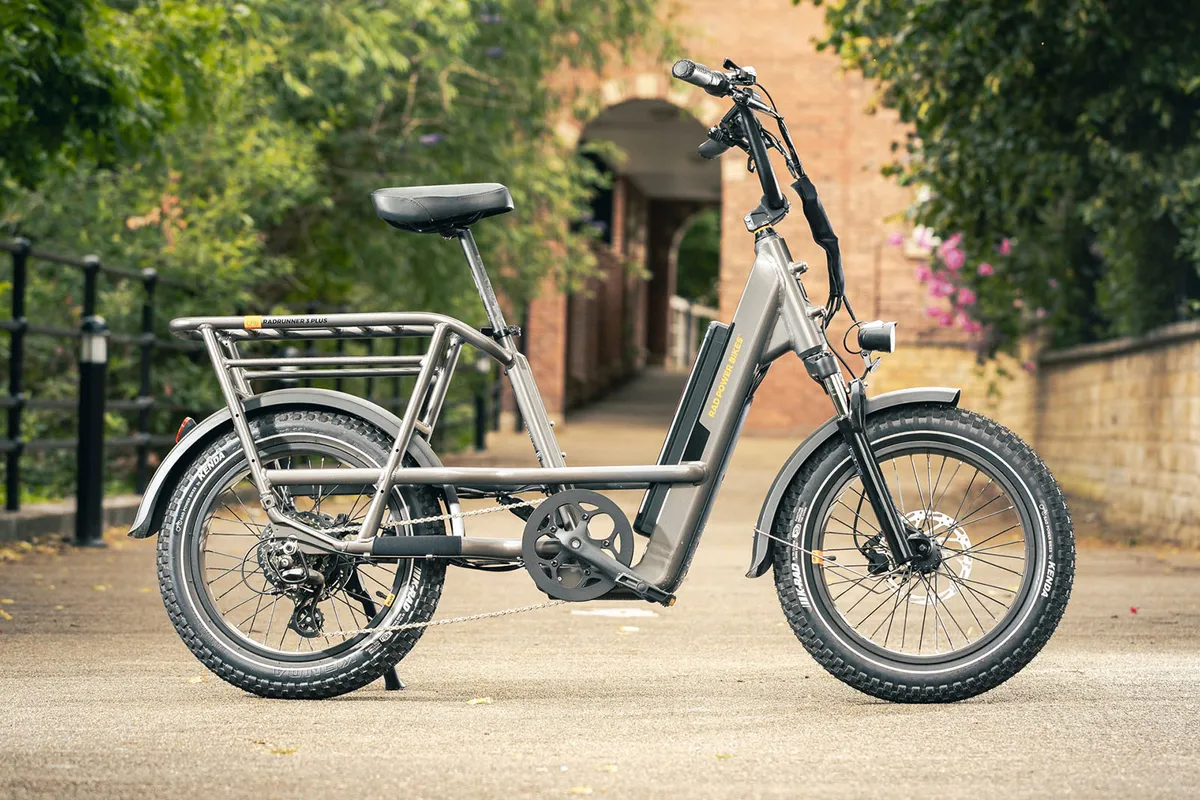
- £2,199 / $2,299 as tested
- Pros: Easy-riding with steady handling and large load capacity
- Cons: Struggles on steep, long hills
The RadRunner 3 is a versatile and easy-to-ride electric hybrid bike that offers plenty of load capacity thanks to its built-in rack.
The power delivery from the 250W hub motor pushes the RadRunner along at a good pace and offers five levels of assistance, as well as a boost for getting up to speed.
Warren found it suffered on long steep inclines, with the motor struggling to shift the bike's weight.
He managed to get 37.5 miles (60.3km) with 628.55ft (191.6m) of climbing out of the 672Wh battery.
Best electric folding bikes
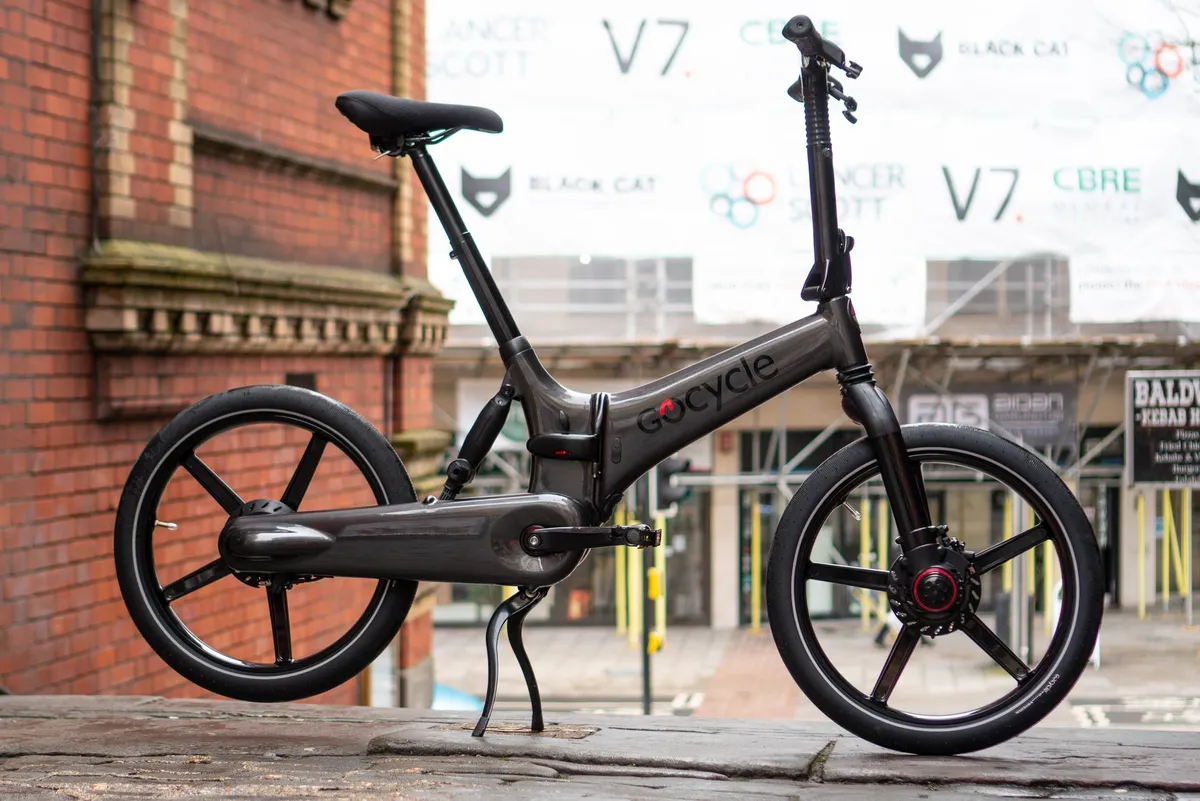
If you want to cycle to work or are just pressed for space to store your ride, a compact electric folding bike could be the answer.
Folding ebikes often have the battery hidden in their frames, or they may come with a removable battery to make carrying them on and off public transport a bit easier.
A removable battery also means you can take it somewhere where it’s easier to charge (at your desk, for example, if you use the bike to ride to work).
But the extra weight of the motor and battery means carrying a folding ebike on and off public transport, and up and down stairs, will be harder. The available range can be quite limited in some models too.
For more product recommendations, check out our round-up of the best folding electric bikes.
GoCycle G4
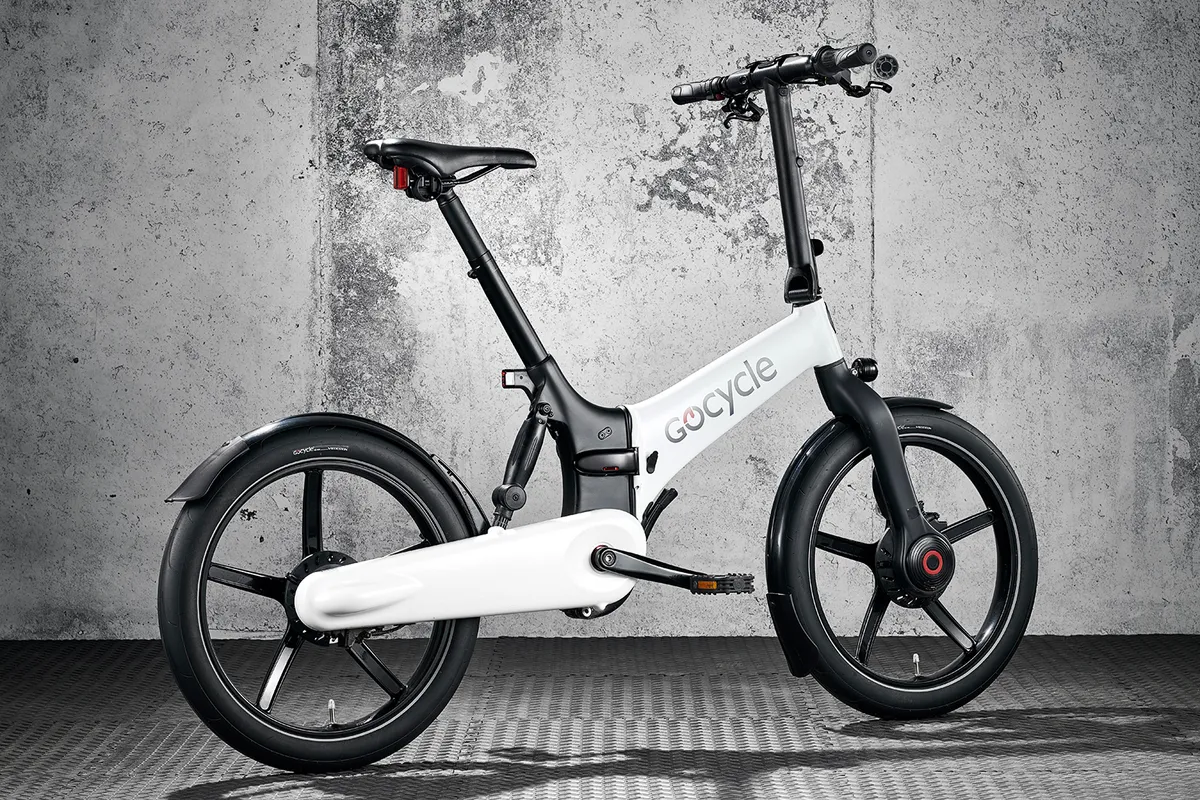
- £3,999 as tested
- Pros: Larger wheels ride more smoothly; stylish design
- Cons: Expensive; doesn't fold as small as some ebikes
While pricey, the GoCycle G4 is a folder, commuter and electric bike in one. The ride and handling are far more assured than most folding bikes on- and off-road, thanks to the meaty tyres and larger wheels.
The bike folds in half at its centre, making it easier to roll than to carry and the removable battery in the front of the frame is accessed via the fold. At over 17kg, it's quite heavy though.
MiRider One GB3
SQUIRREL_TEXT_13083500
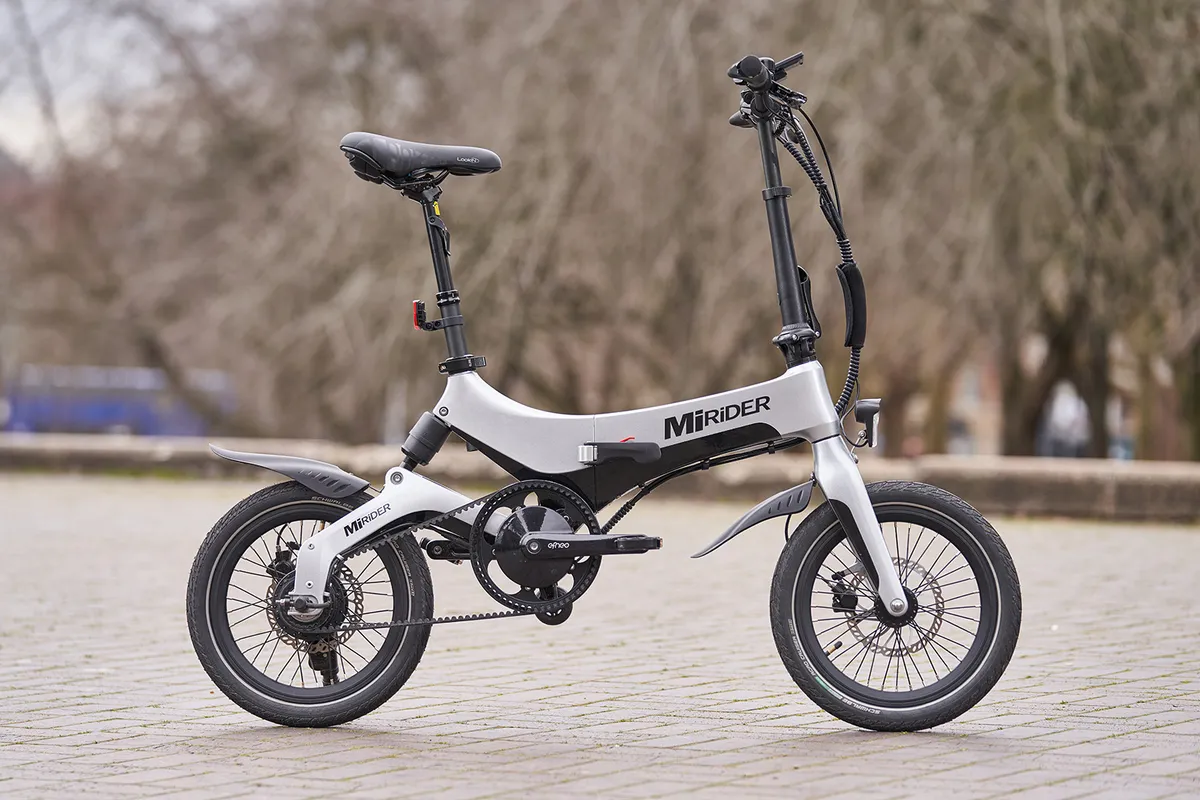
- £2,495 as tested
- Pros: Very compact
- Cons: Price has increased significantly from the original bike
The MiRider One GB3 is an upgrade from the original model we tested a few years ago. Unfortunately, that's resulted in a significant price hike, but the ebike is still a compact, nippy city commuter.
The belt drive is cleaner and lower-maintenance than a chain, there's good adjustability, and built-in rear suspension and wide tyres add comfort.
The GB3 design has three speeds, adding flexibility over the singlespeed predecessor, and you can change gear while stationary. We achieved a range of up to 50km.
SQUIRREL_13083500
Best electric mountain bikes
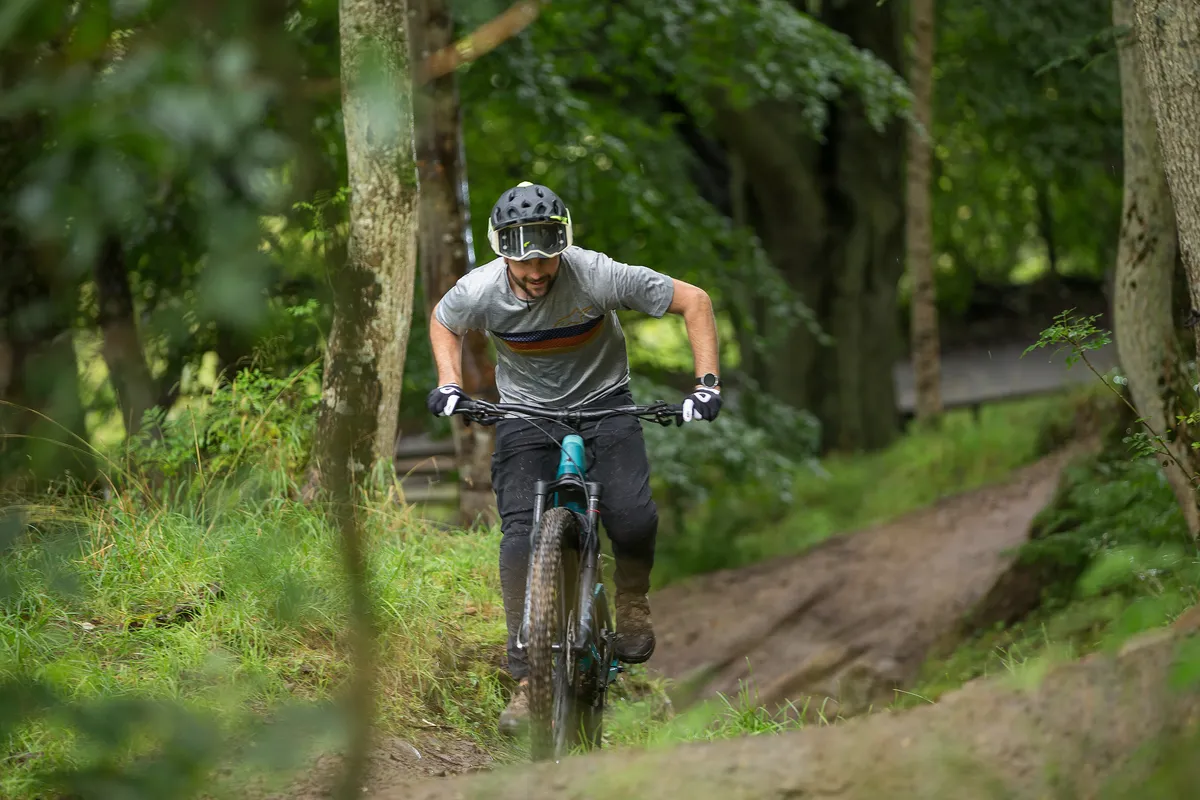
An electric mountain bike will get you to the top quicker, particularly on technical, steeper climbs, and with more energy to enjoy the descents. Plus, getting up the ups more easily will give you extra range to explore further.
Recent improvements in eMTB performance mean handling is approaching that of the best mountain bikes without a motor, providing heaps of flat-out riding fun.
But, nevertheless, the extra weight can make handling more tricky on particularly technical sections, so it’s a good idea to ease off a bit until you’ve got the feel of the bike
This is a small selection of the best electric mountain bikes we have tested, as selected by our expert team of mountain bike tech editors, Alex Evans, Robin Weaver and Tom Marvin.
Canyon Strive:ON CFR

- £6,699 as tested
- Pros: Impressive value; excellent geometry; great spec
- Cons: Imprecise shifting
The Canyon Strive:ON CFR won our eMTB Bike of the Year award for 2024. It is a near-perfect electric enduro bike that delivers a confident ride, especially over the hardest and fastest terrain.
The bike uses Bosch’s Performance Line CX motor and 750Wh battery. The motor is powerful yet easy to control and Alex found the battery life to be brilliant, sometimes clocking over 2,000m of ascent from one charge.
The bike has an excellent spec, especially for the £6,699 price tag. But the gear shifting can be imprecise and you may want to switch Canyon’s firm grips for a set of the best MTB grips for some extra comfort.
Orbea Rise LT M-Team
SQUIRREL_TEXT_13182182

- £8,943 as tested
- Pros: Well-considered geometry; sorted suspension; likes being ridden hard
- Cons: Not the most forgiving; mid-sized impacts aren't absorbed the best
The Rise LT M-Team combines sporty suspension and a stiff and direct chassis, giving it a real trail bike feel.
It excels when ridden hard, with proactive inputs resulting in great capability on technical terrain, and the sorted suspension reacts well to big hits.
Our tester didn't find it very forgiving of poor line choices, with mid-sized impacts not being smoothed out that well, but they found the agility made it a fun and fast performer.
The spec is reflective of the price, with flashes of Kashima on the fork and rear shock, plus Shimano's XT groupset and STEPS EP801 motor, which has 85Nm of torque, connected to a 420Wh battery.
SQUIRREL_13182182
Marin Rift Zone E2
SQUIRREL_TEXT_13119149
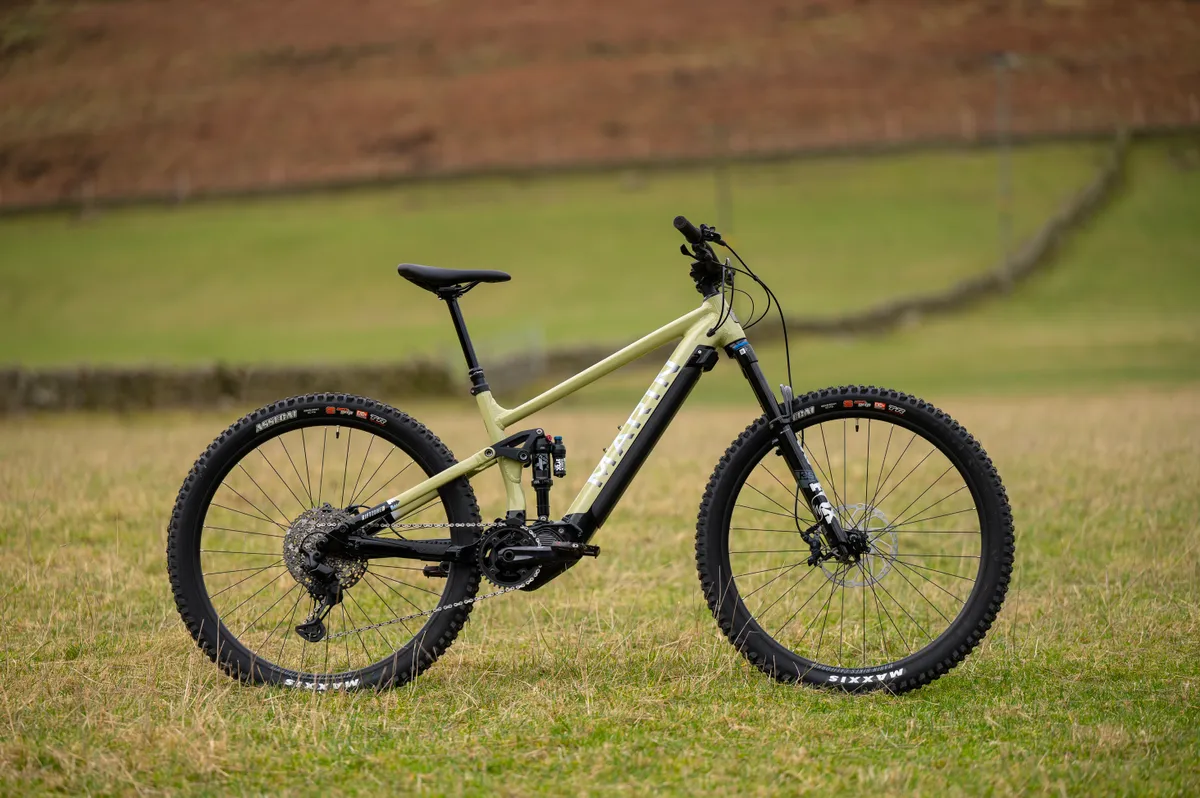
- £5,895 / $6,299 / €6,899 as tested
- Pros: Lively; great spec
- Cons: Slightly over-geared; less powerful motor than its competitors
The Marin Rift Zone E2 is a classy, comfortable full-suspension electric mountain bike with 140mm travel. It can take you beyond its trail-riding mandate, handling more technical descents well.
The Rift Zone ebike is well specced for its price, although the Shimano EP801 motor's 85Nm torque is a little less than competitors. We'd have preferred a smaller chainring than the 38t fitted for easier climbing.
SQUIRREL_13119149
Propain Ekano 2 CF Ultimate

- £8,600 / $9,999 / €9,999 as tested
- Pros: Lightweight; well-considered geometry
- Cons: Battery life isn’t the best; Auto Shift SRAM gears won’t suit everyone
The Propain Ekano 2 CF is a high-performance ebike that proves a hoot to ride.
The geometry, with its descent-ready 64-degree head angle, makes for thrilling yet controlled handling, and the generous suspension will eat up bumps on technical descents. The bike proves efficient on the climbs too.
The SRAM Eagle PowerTrain ebike motor is excellent. The Auto Shift gear changes won’t suit everyone, but the integration with the controls, shifting, dropper post and motor probably will.
This isn’t a cheap eMTB, but it’s certainly one of the best.
Specialized S-Works Turbo Levo SL II
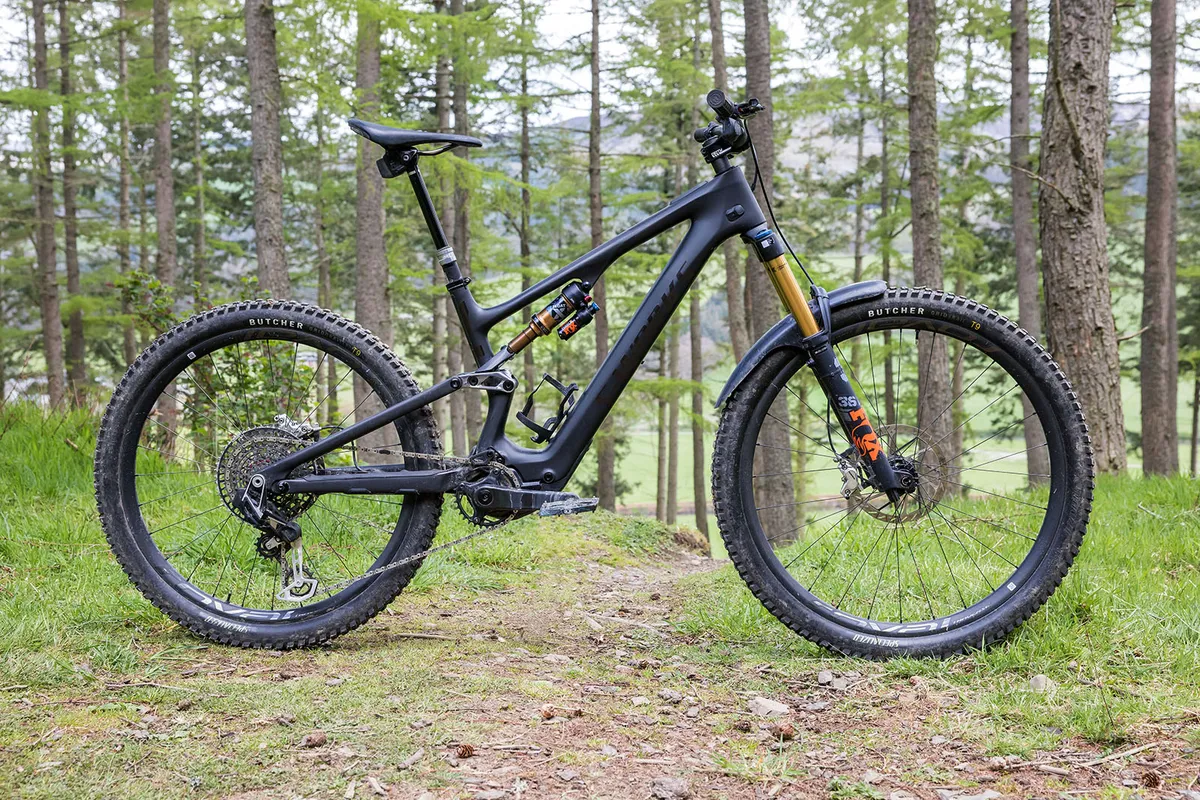
- £13,000 / $14,000 / €14,000 as tested
- Pros: Confident and capable on a variety of terrain; adaptable geometry
- Cons: Rear tyre casing not adequate for riding style; cost
Specialized's S-Works Turbo Levo SL II has a large performance band that makes it feel at home on any trail regardless of the gradient.
Its Turbo SL 1.2 motor provides 50Nm of torque and 320W of peak power, giving the bike a punchy feeling up the climbs, while conserving battery levels well.
While the bike is priced at the very high end, the spec list reflects the asking price, with full Fox Factory Suspension and SRAM's new XX Eagle Transmission.
Specialized has once again produced one of the best ebikes on the market.
Whyte ELyte 150 Works
SQUIRREL_TEXT_13120628

- £9,999 as tested
- Pros: Great descender; long-lasting battery; decent weight
- Cons: Motor is best at a high cadence; oversized chainring
Weighing 19.6kg, the Whyte ELyte won our inaugural lightweight eMTB award in 2024 with Alex praising its “incredibly balanced ride”.
The bike is an excellent descender, thanks to its calm and composed handling and ride-smoothing suspension that feels more capable than the listed 142mm of travel.
The geometry figures, low weight and Bosch motor help you climb. But the large 36-tooth chainring and the motor’s desire for a high cadence can pose a problem on ascents.
These are small details, though, and there’s no denying that the ELyte is one of the best lightweight eMTBs.
SQUIRREL_13120628
Best electric road bikes
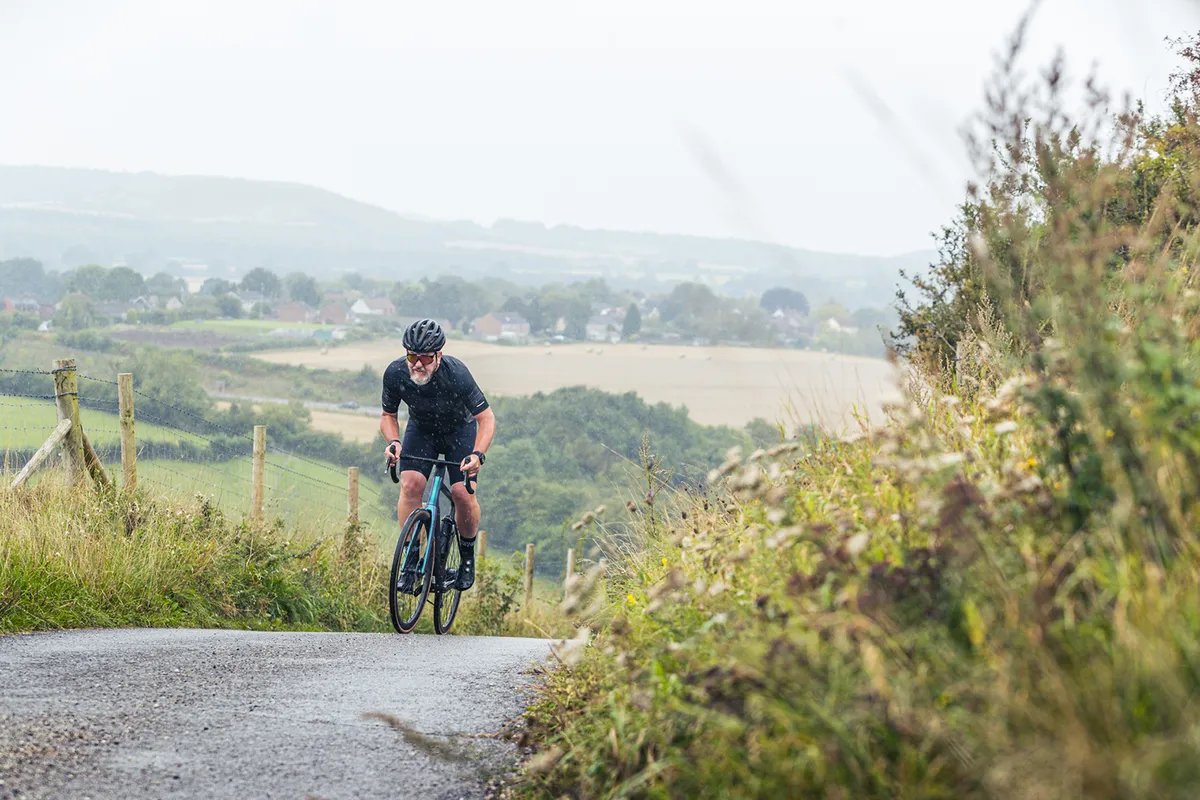
If you enjoy road cycling, but want a bit of help to keep your speed up or to get you up hills, an electric road bike could be the right choice for you.
Most e-road bikes use lightweight motor systems that provide less power than the motors used on electric hybrid or mountain bikes. This means they're typically a bit lighter too, with the very lightest models tipping the scales at around 11kg.
However, with many road riders achieving speeds on the flat of 15mph or above, you may feel you're carrying dead weight around, with the motor cutting out at that top-assisted speed, although assistance can continue to 20mph, or even in some cases 28mph in much of the USA.
Below are three of the very best electric road bikes senior road technical editor Warren Rossiter has tested to date.
BMC Roadmachine AMP One
SQUIRREL_TEXT_13120629
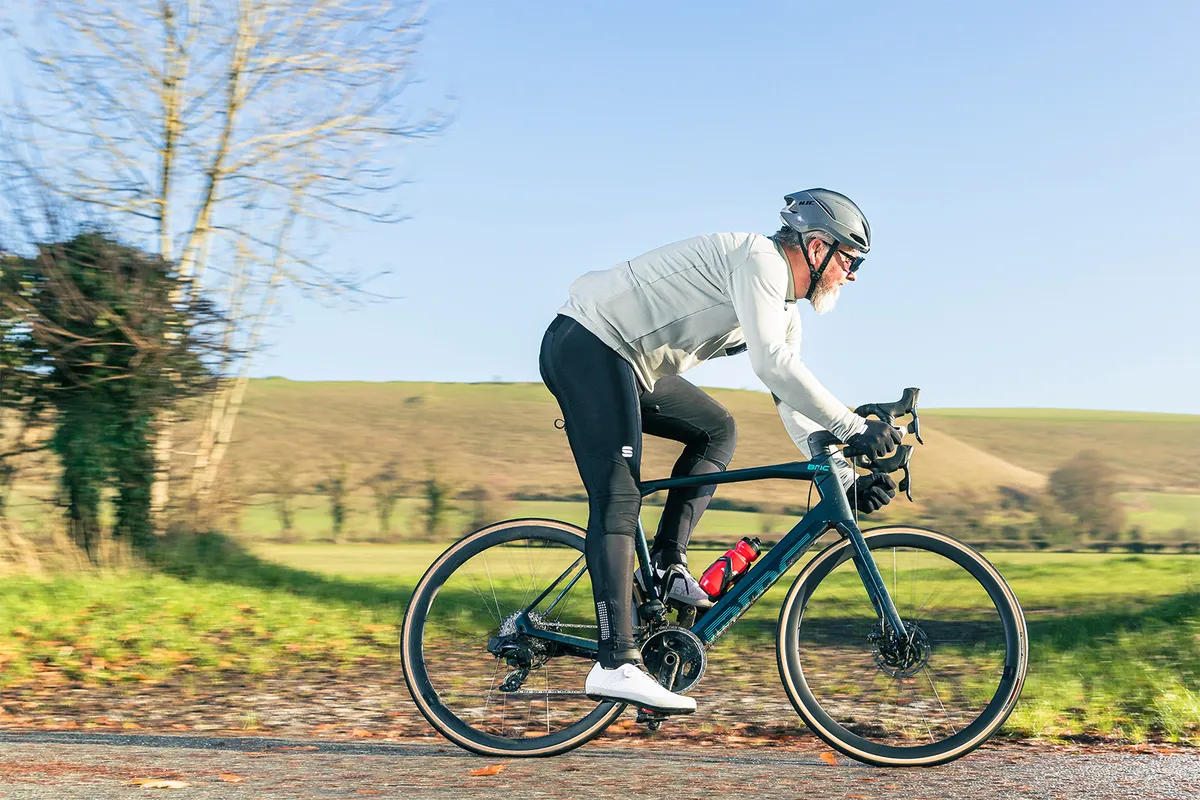
- £7,600 / €7,999 as tested
- Pros: Smooth ride; compact motor; impressive range
- Cons: Tyres may need a swap-out for colder, wetter conditions
The BMC Roadmachine AMP One doesn't look much different from its non-assisted sibling; it's only the slightly expanded down tube, hiding a 350Wh battery, that shows there's extra assistance. The Mahle X20 motor is so compact it hides between the largest cassette sprocket and the disc rotor.
Warren found the ride similar to the non-assisted Roadmachine, despite the 12kg weight. Range is impressive, heading up to 160km, depending on the conditions. We'd swap out the tyres for winter use though.
SQUIRREL_13120629
Trek Domane+ SLR 6
SQUIRREL_TEXT_13120630
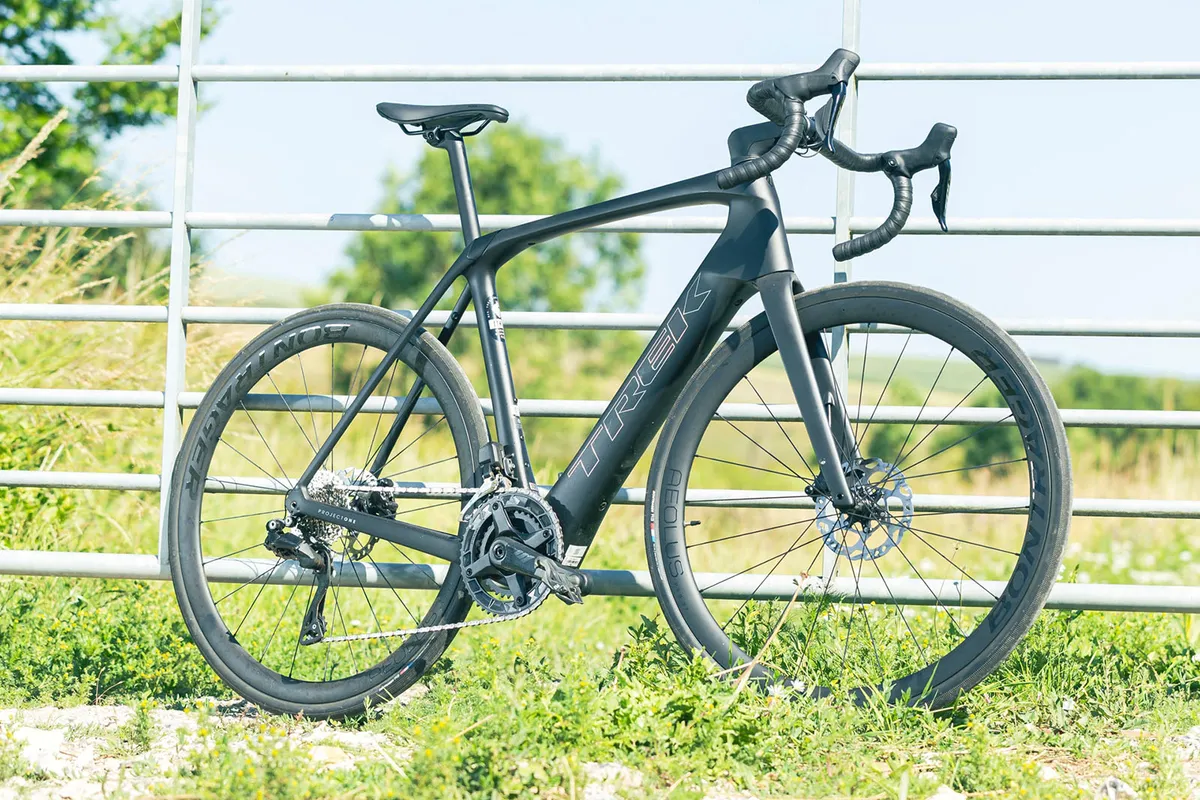
- £8,400 / $9,000 as tested
- Pros: Powerful motor; fast charging; smooth ride
- Cons: Remote control brackets slip
The Domane+ SLR 6 offers a smooth and comfortable ride with direct steering and a quiet yet powerful TQ motor.
Trek has kept things similar to the non-assisted Domane, with the bike featuring an IsoSpeed rear end that helps smooth out bumps and road noise.
The electronic tech is well integrated, with the low-down weight of the motor helping when roads get curvy. However, the control points for the motor, that are positioned on the inside of the hoods, had a tendency to slip during testing.
SQUIRREL_13120630
Orbea Gain M10i
SQUIRREL_TEXT_13120631
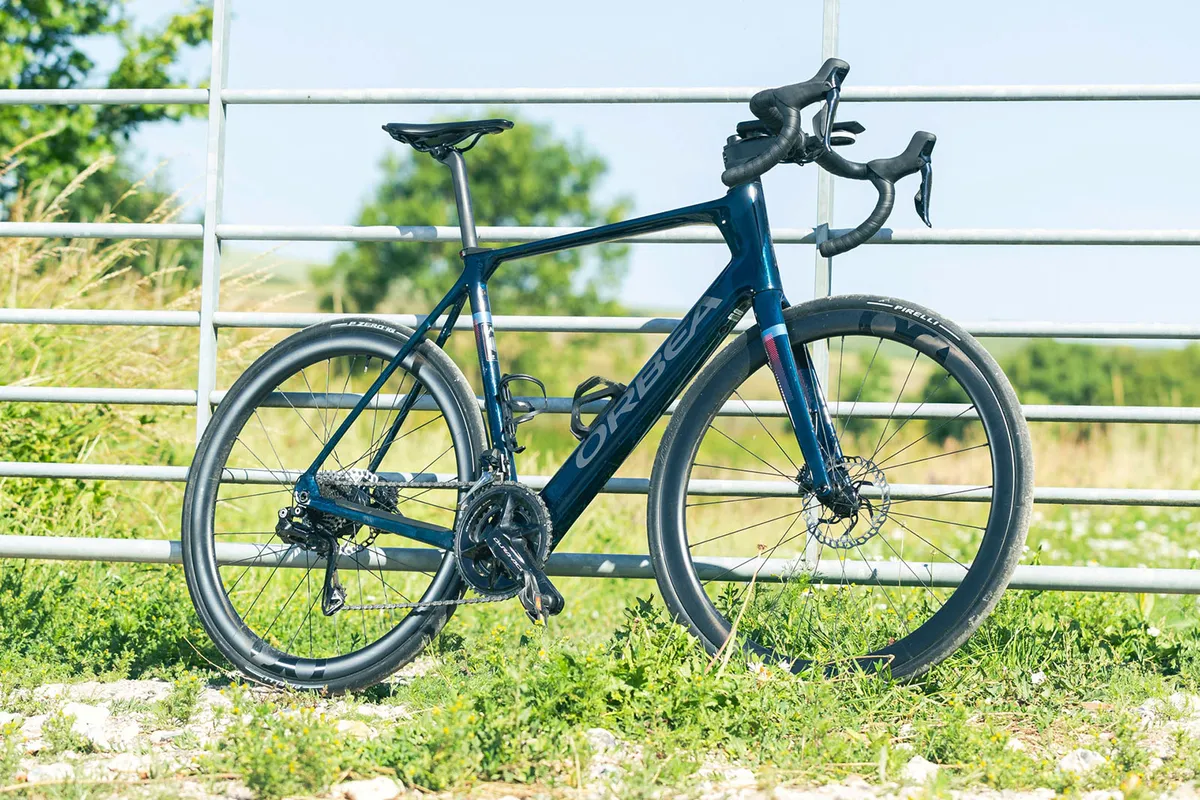
- £9,299 / $9,999 / €9,999 / AU$17,999 as tested
- Pros: Lightweight; impressive range
- Cons: Superbike build with Shimano Dura-Ace Di2 might be excessive
The Gain's ride outshines many of its contemporaries, with the Orbea-tuned Mahle X20 hub motor mirroring your inputs for natural assistance.
Warren was also impressed by the bike's range, riding 62.25 miles (100.18km) including 3,795.8ft (1,157m) of ascent with 45 per cent of the battery still remaining.
The Gain is based around the Orca road bike, with a more endurance-inspired geometry that provides quick handling and a balanced feel.
The M10i comes with a superbike spec list and price tag, which may be overkill for some, but there's no denying Orbea has pulled out the stops on the Gain.
SQUIRREL_13120631
Best electric gravel bikes
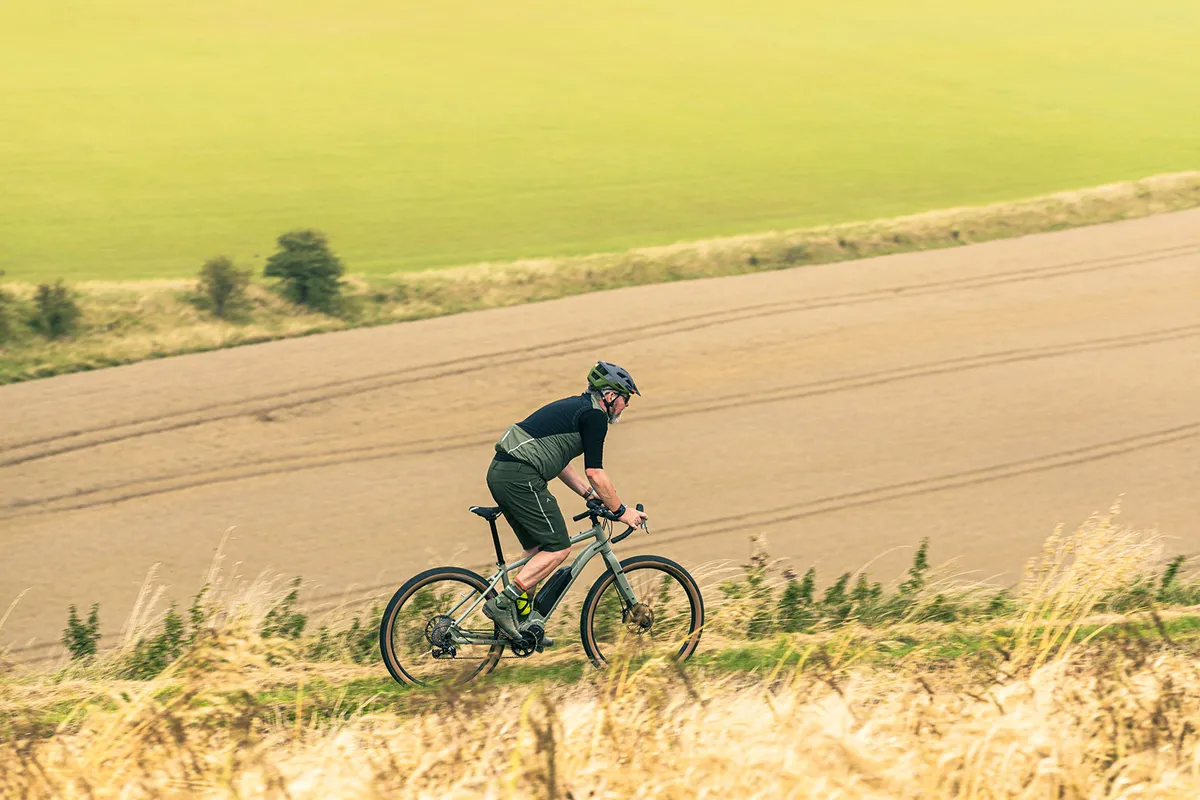
Electric gravel bikes mix the racy ride position and range of an electric road bike with a tamed-down version of the off-road capability of an eMTB – the same winning combination that makes the best gravel bikes so popular.
Electric gravel bikes may feature more powerful motors than e-road bikes, with some even including the same motors seen on electric mountain bikes. They also tend to feature lots of useful mounts for accessories and tons of tyre clearance for chunky gravel tyres, making them a very versatile option.
This is a selection of the very best electric gravel bikes, once again ridden, reviewed and rated by our senior technical editor, Warren Rossiter.
Ribble Allroad SL R e Pro
SQUIRREL_TEXT_13152760

- £5,999 / $6,995 / €8,380 as tested
- Pros: Impressive range; very fast with the motor off; great handling
- Cons: Steering stops restrict low-speed manoeuvrability; handlebar will divide opinion
The All Road SL R E Pro is fast and fun, even with the hub motor not engaged.
Its Mahle X20 motor gives it 55Nm of torque, and the 350Wh battery provides plenty of range for longer rides.
We found the bike to handle superbly and the integrated pedal assistance kicked in without taking away from the natural ride feel of a gravel bike.
Steering stops designed to protect the top tube cause some issues with low-speed manoeuvrability and the half-taped handlebar will cause issues for some – especially if you're riding gloveless in the rain.
SQUIRREL_13152760
Canyon Grizl:ONfly CF 9

- £6,499 / $5,599 / €7,099 as tested
- Pros: Great range; impressive spec list; comfortable and stable demeanour
- Cons: Shifting relies on the system being on; could be more engaging on technical terrain
Canyon's Grizl:ONfly CF 9 uses a Bosch Performance Line CX motor that delivers 55Nm of torque connected to a 400Wh motor in the down tube.
Our tester found this gave an impressive range of 97.4km/60.05 miles with 456m/1,497ft of elevation on a mostly off-road route.
Thanks to Canyon's direct-to-consumer model, the spec of the bike is excellent, with a RockShox Rudy Ultimate XPLR fork, DT Swiss HGC1800 carbon wheels and SRAM's Force AXS XPLR groupset all featuring.
The bike offers good comfort and capability on various terrain, although it isn't the most engaging on technical trails.
Sonder El Camino Apex 1

- £2,999 / $3,899 / €2,999 as tested
- Pros: Very capable on rough terrain; great value; good motor system
- Cons: Not the most efficient on road; brakes are noisy
The El Camino sits at the more capable end of the gravel spectrum, with a comfortable and confidence-inspiring geometry that enables you to take on singletrack trails.
The downside of this is the bike's efficiency on the road, where it becomes harder to exceed the pedal assistance limiter.
A Kynamic hub-mounted motor is married to a 250Wh battery, delivering 45Nm of torque to give you plenty of push on steeper sections of your route.
Our tester found the system to perform well, managing 54km / 33.56 miles, with 467m / 1,532.2ft of ascending, on a purely off-road excursion.
We found the brakes became noisy as they heated up and would have liked to have seen the controls for the motor to be a little closer to the hoods.
Best electric cargo bikes

Electric cargo bikes mix load-hauling frame features with electric assistance enabling you to power up hills while carrying just about anything.
Electric cargo bikes usually use the most powerful electric motors, with some models featuring two batteries to aid with range.
They also tend to feature large racks with plenty of frame mounts to secure cargo to, while some will feature large buckets or baskets at the front.
This is a selection of the best electric cargo bikes ridden, reviewed and rated by our senior technical editor, Warren Rossiter.
Momentum PakYak E+
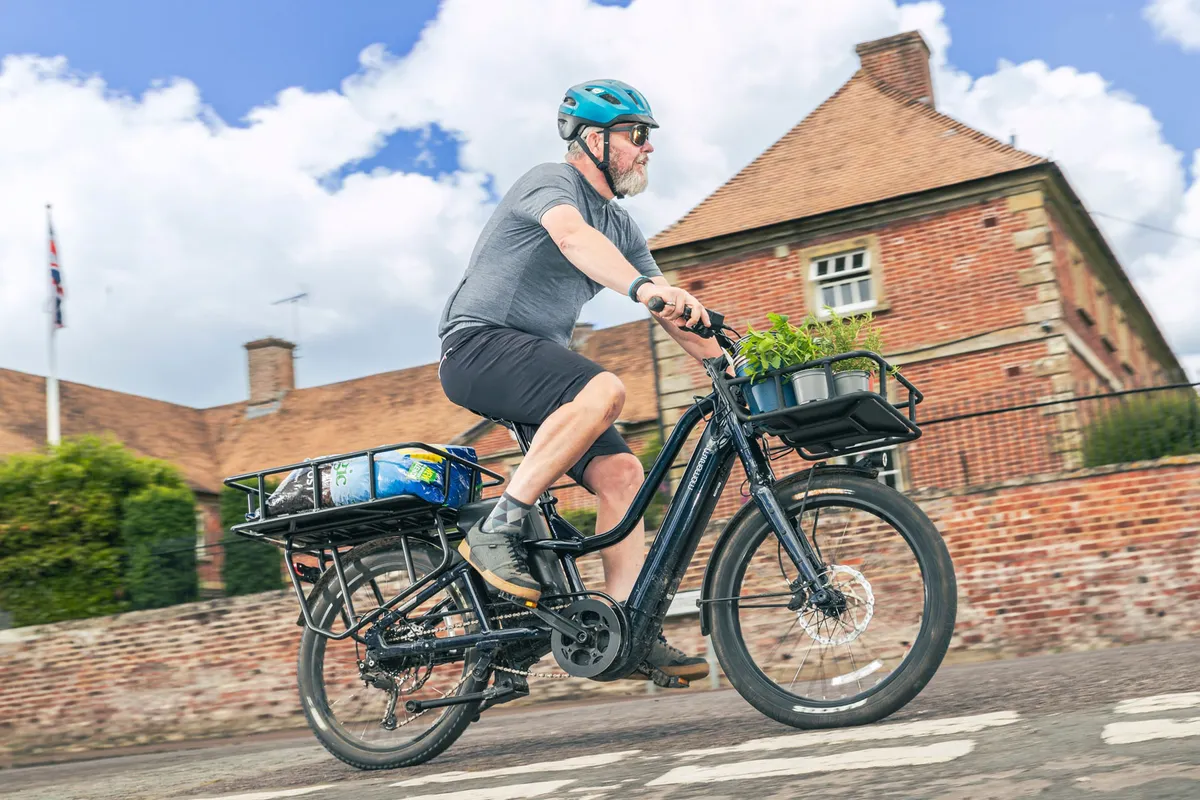
- £4,149 as tested
- Pros: Impressive handling; decent range; accessories included; good value
- Cons: Kickstand not the most stable
The Momentum PakYak E+ has fantastic handling and puts you in an ideal riding position when set up correctly.
Its Yamaha motor has plenty of power and Warren found the 500Wh battery gave it a good range.
The PakYak E+ also comes with quality accessories, including a rack, lights and mudguards.
Priced at £4,148.99, the PakYak E+ is more competitively priced than other e-cargo bikes.
Cannondale Cargowagen Neo 1
SQUIRREL_TEXT_13120634

- £5,390 as tested
- Pros: Impressive motor and drivetrain; well-specced; comfortable and confident ride
- Cons: Not the most manoeuvrable
The Cannondale Cargowagen Neo 1 offers plenty of versatility thanks to many well-considered features.
It carries itself well down the road, with good handling, ample power and plenty of range making it a joy to ride.
Warren liked the dropper post, which allows for easy mounting and dismounting when stopped at a set of traffic lights.
The Cargowagen Neo 1's steering stops make it tricky to turn in a small circle, but this doesn't detract too much from the bike's appeal
SQUIRREL_13120634
Cube Longtail Sport Hybrid 725
SQUIRREL_TEXT_13120635
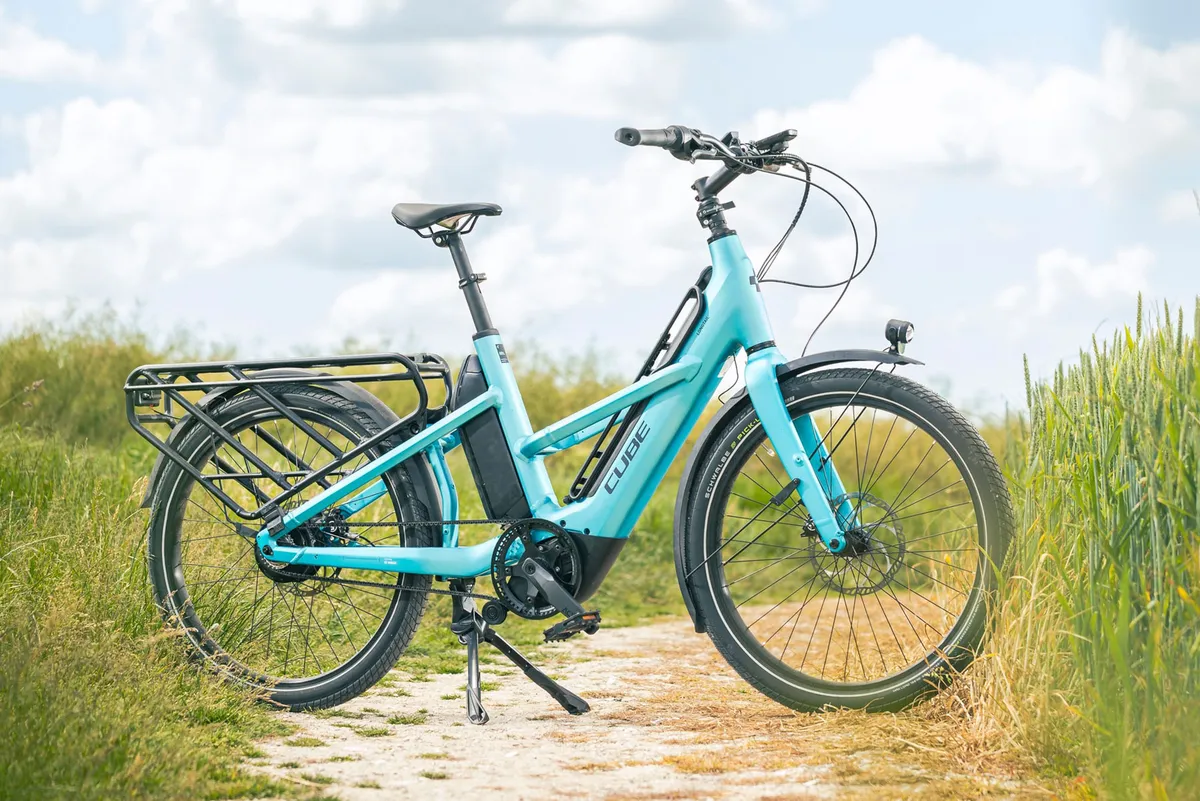
- £3,999 / €4,699 as tested
- Pros: Good range; well-specced; impressive handling
- Cons: Shorter riders may need a dropper post
The Cube Longtail Sport Hybrid 725 has larger wheels than most electric cargo bikes, making it comfortable yet sprightly to ride.
A powerful Bosch Cargo Line motor is used and there's an option of carrying two batteries to increase the range.
The Longtail Sport Hybrid 725 comes with a lot of good accessories as standard, including a long rear rack, mudguards, integrated lights and a kickstand.
Although the Longtail Sport Hybrid 725 fits riders of different heights, Warren feels a dropper post would help shorter cyclists feel more confident when mounting and dismounting the saddle.
SQUIRREL_13120635
MiRider 24 GB3
SQUIRREL_TEXT_13164013

- £2,995 as tested
- Pros: Comfortable riding position; practical space-saving design; smooth power
- Cons: Battery-level indicator slightly off
MiRider's 24 GB3 looks great, rides smoothly and offers wide-ranging comfort.
Unlike the brand's folding model, the One GB3, the 24 GB3 only features a folding handlebar, which reduces the space required to store the bike.
We found the power and range to be ample, although the battery monitoring was a little wayward on our test bike.
The compact design makes it fun to ride, while it remains comfortable thanks to a well-considered riding position.
Its cargo-carrying ability is impressive, and our tester managed to eke 28.06 miles / 45.06km with 1,385ft / 422m of ascent out of a single charge.
SQUIRREL_13164013
How we test electric bikes
Much like regular bikes, not all electric bikes are designed for the same type of riding.
In order to make sure our testing of electric bikes is fair and accurate, we assess them against others in the same discipline to avoid comparing apples to oranges.
Whatever the discipline, we run long test cycles on electric bikes to make sure all their strengths and weaknesses can be identified.
We tested some of the very first electric bikes and have seen the category grow over the years.
Our testers have rated and reviewed hundreds of electric bikes and have plenty of experience living with them.
Ultimately, our electric bike reviews are based on the following criteria:
- Power – is the bike powerful enough for its intended use?
- Battery size and range – how far can you go on one charge?
- Manoeuvrability – how easy is the bike to move when riding and pushing it?
- Quality of construction – is the bike well-made?
- Specification – are the components of the bike good quality?
- Ease of use – is the bike simple to use? Are any screens easy to navigate?
- Value for money – how does the bike compare to others on the market, and are you getting a good deal?
Why you can trust BikeRadar
BikeRadar has been an authority on bikes and cycling tech since its inception in 2007, delivering the world’s best riding advice.
We have experts testing all types of bikes, parts, clothing and accessories, from road, mountain and gravel bikes to commuting, bikepacking and electric bikes.
Our reviews are always editorially independent – with no exceptions. Our reviewers comprehensively test all products in the real world, always reflecting on performance, value and the wider market when delivering their verdicts and review ratings.
We have more than 15,000 product reviews available at your fingertips, as well as expert buying, maintenance, training, skills, health and fitness advice.
Our annual Bike of the Year test is an industry benchmark and the BikeRadar team consists of some of the most experienced riders and testers in the business.
Electric bike buyer’s guide
What is an electric bike?
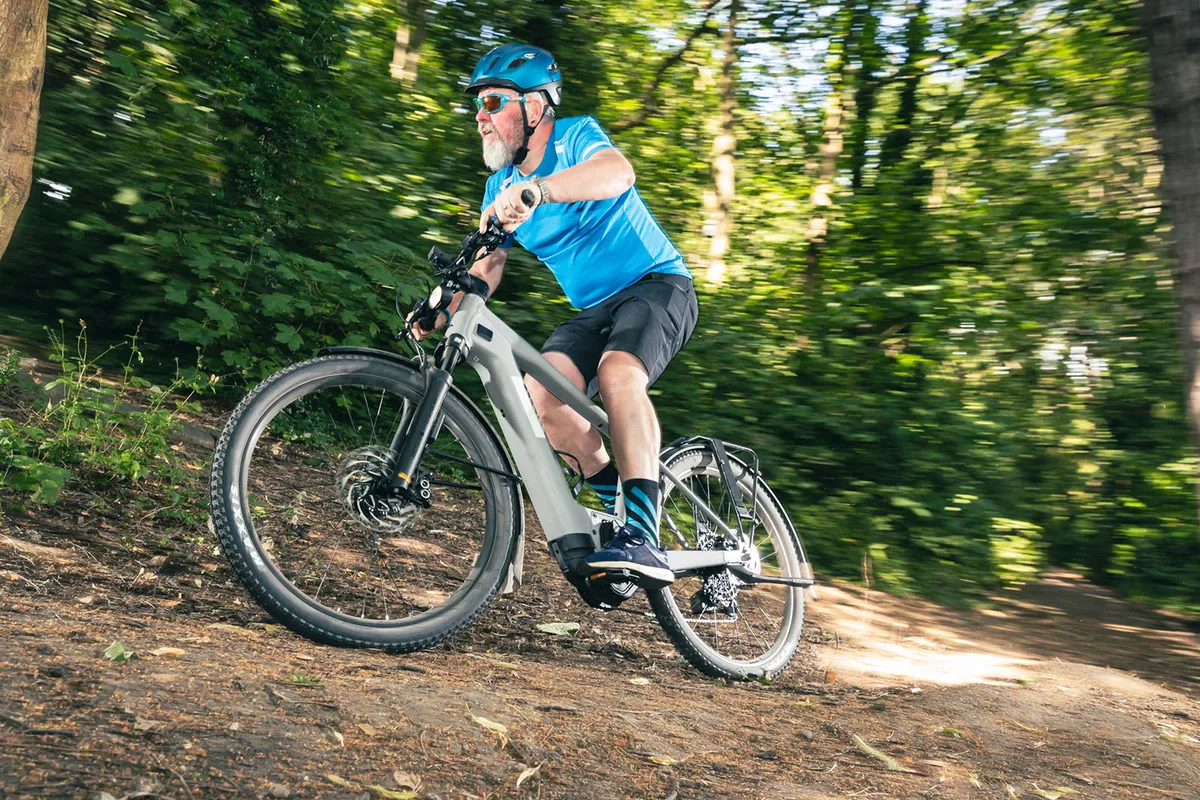
An electric bike is a bicycle where the rider’s pedalling input is assisted by an electric motor. This makes it easier to get along, particularly when moving off and when riding up hills.
Most electric bikes only provide assistance when the rider is pedalling and this is mandatory in the UK and EU. In the US and Australia, you can also use an electric bike that is throttle-operated, so that you don’t need to pedal for the motor to provide power.
Riders can usually choose from a range of levels of assistance and it’s usually possible to ride the electric bike like a normal bike without any assistance from the motor.
The motor gets power from a rechargeable lithium-ion battery mounted on the bike, which is charged using mains electricity when the ebike is not in use.
Electric bike motors
Electric bike motors are located in one of three places:
- The middle of the bike
- The rear hub
- The front hub
Mid-mounted electric bike motors
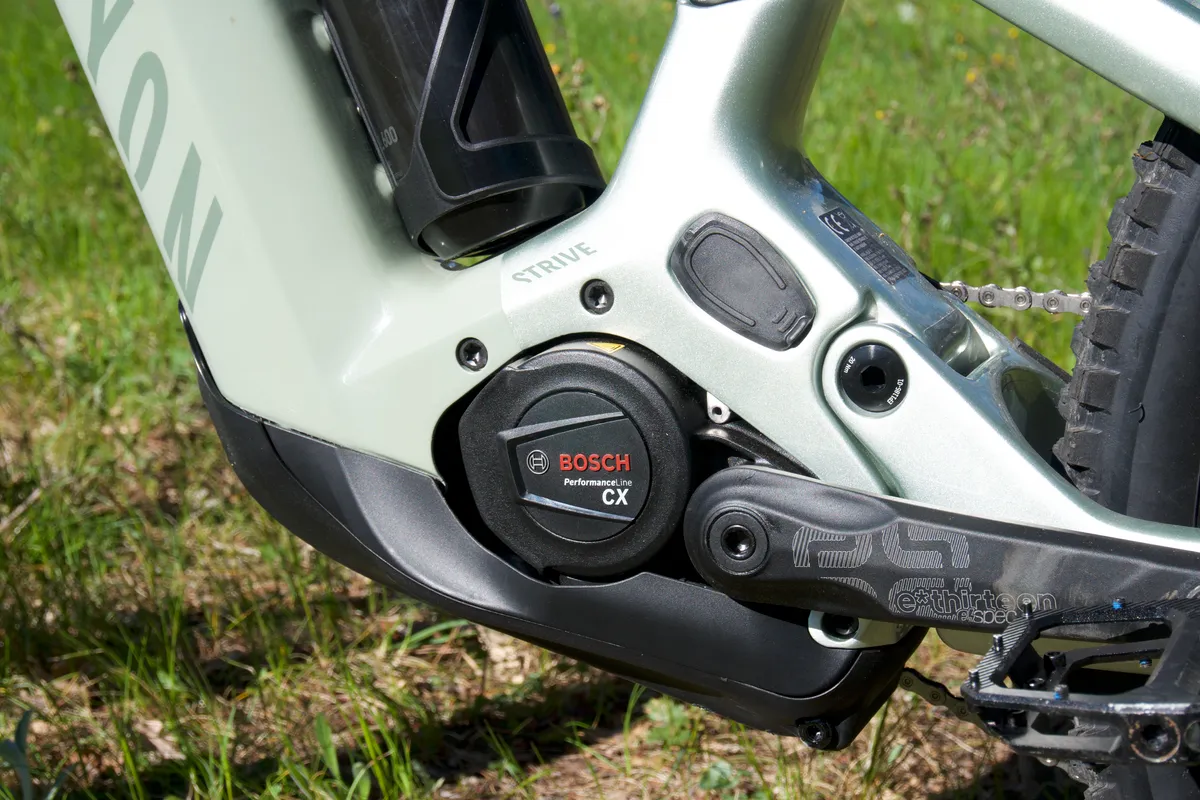
Many ebikes will have mid-mounted motors that sit next to the pedals at the bottom bracket and power the ebike through the chain. It’s a good position for the motor because it puts the extra mass low down and centrally in the frame, where it won’t affect the bike’s stability and handling.
It’s a particularly popular placement for electric mountain bikes, but is also found in many hybrid electric bikes and other electric bike types.
Rear-hub electric motors
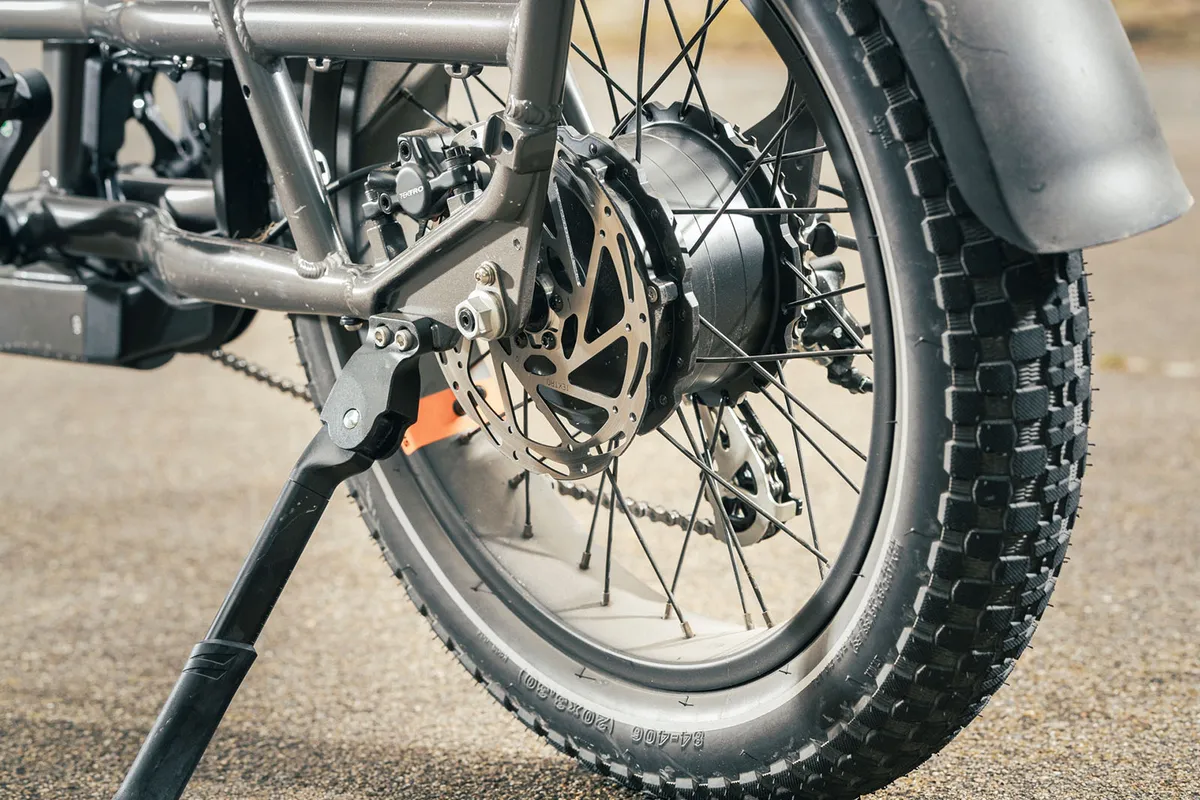
The rear-wheel hub is a popular place to put the motor, particularly on low-priced ebikes and lightweight ebikes, including electric road bikes.
Rear-hub motors are low down and since a lot of the rider’s weight is on the back wheel, handling and road grip are not too adversely affected by the extra weight and power.
Front-hub electric motors
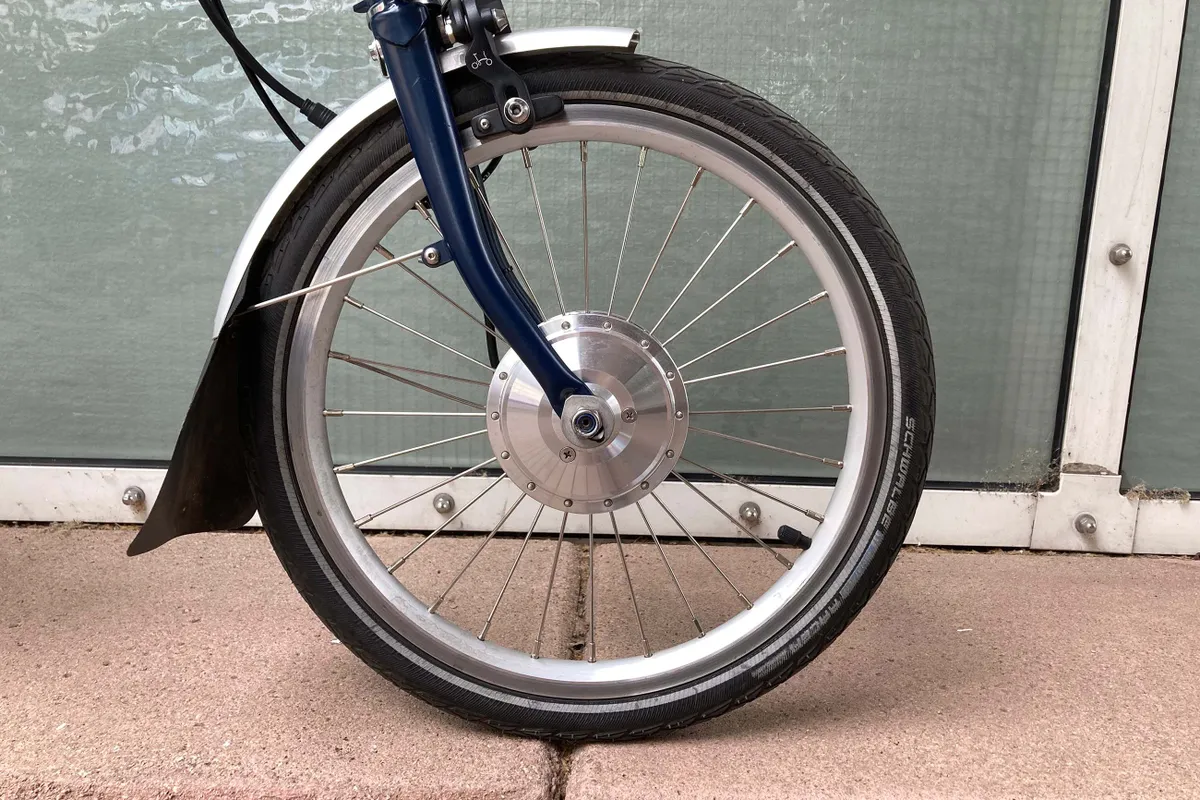
An electric bike motor may be in the front hub. It’s a slightly trickier position because the motor unit can affect steering and because there isn’t as much weight on the front wheel, grip may be impacted.
It’s most often used for folding electric bikes and sometimes for electric hybrids.
Some electric bike conversion kits use a motor in the front hub.
Electric bike batteries
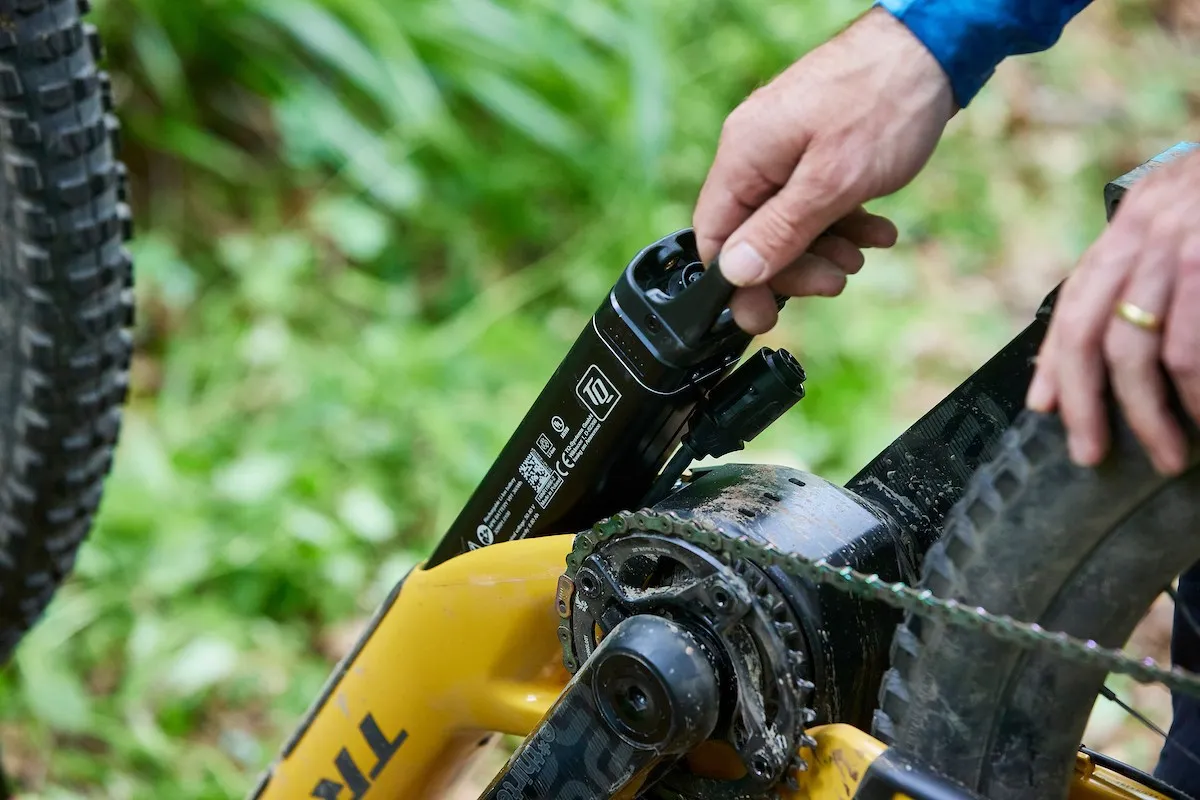
A rechargeable lithium-ion battery will power an electric bike. Like the batteries in other electric vehicles, these are used for their low weight and performance, along with rapid recharging – typically charging to full capacity in a few hours.
In general, the more expensive the ebike, the larger the battery capacity, so the mileage you can get between charges increases.
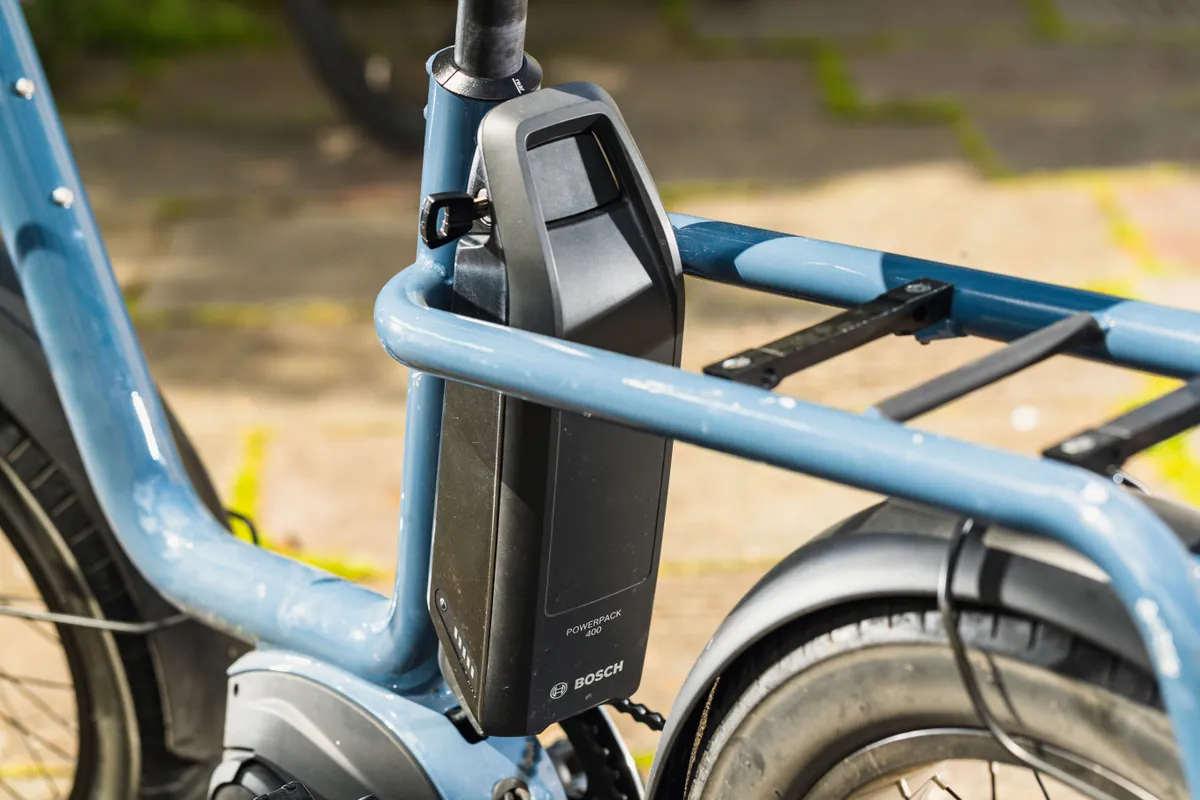
There’s a range of battery shapes, sizes and positions. Many ebike batteries are fitted to the top of the down tube is a popular option, while some electric hybrid bikes have the battery positioned below a rear luggage rack.
Some ebikes will have their batteries enclosed within the down tube or sometimes the seat tube, making for a more elegant (and invariably more expensive) solution.
Bottle-cage batteries are another way to provide power to an ebike and are often used as a back-up battery to increase range.
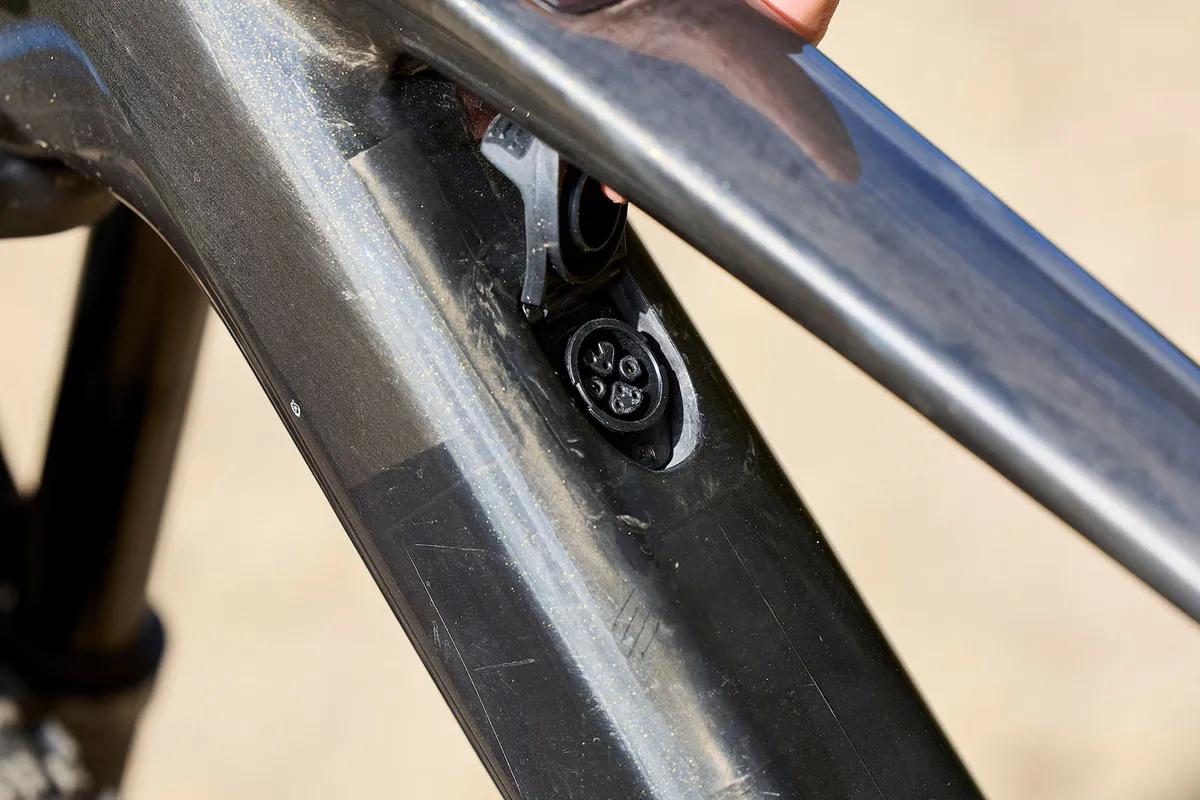
You can typically charge an ebike battery from a standard wall plug, either in situ on the bike via a port in the frame or with the battery itself removed from the bike. It’s very common to see removable battery packs that are secured with a key. Electric bike batteries are valuable items.
Ebike sensors and accessories
An electric bike will often have a controller and a range of sensors to control the level of assistance it provides.
Ebike controllers
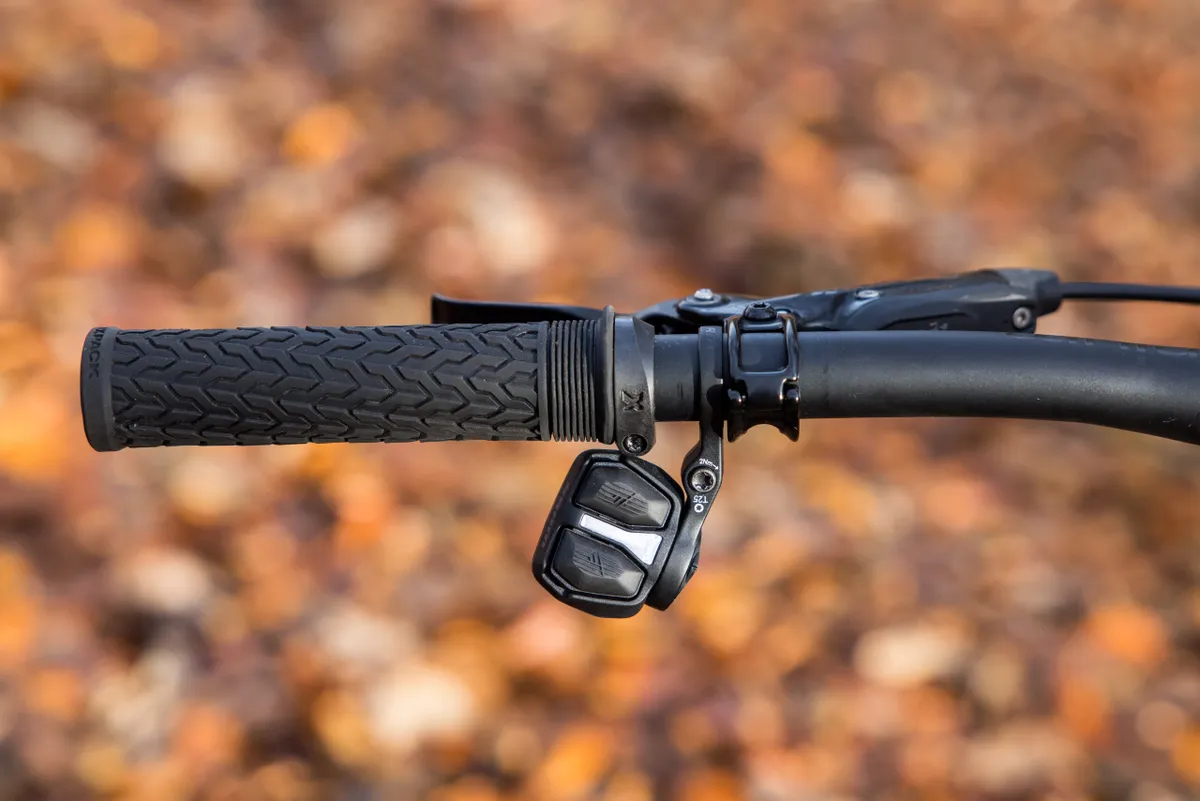
You can usually adjust the level of assistance an ebike provides via a controller. The controller will often be on the handlebar close to your hands, with either a small screen or coloured LED lights indicating the current assistance level.
Some ebikes have a controller mounted on the top tube. Other flashy electric bikes, including the Trek Domane+ SLR, have tiny control buttons on the handlebar and transmit data on assistance level to a cycling computer.
A controller usually tells you the residual charge in the battery and sometimes the range you can expect. That’s often supplemented by location information and sometimes by maps.
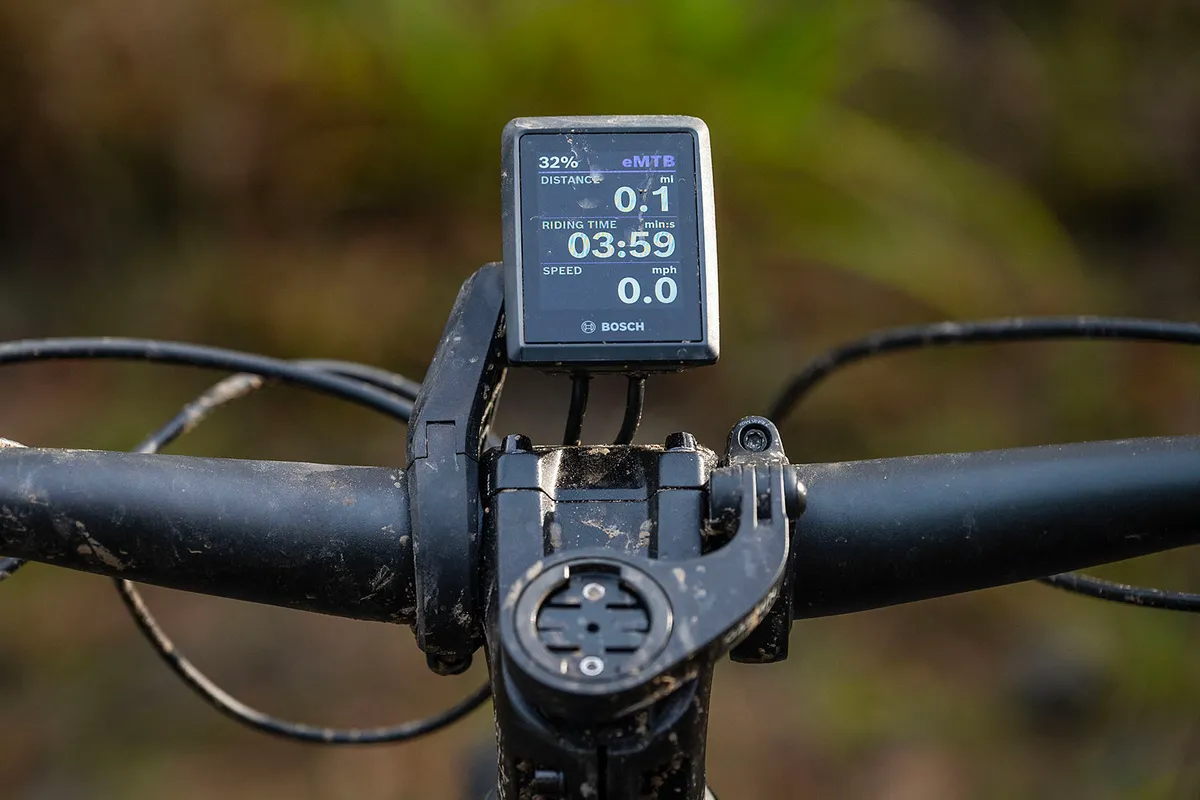
It’s becoming more common for you to be able to lock the ebike using the controller, immobilising the drivetrain. One example is the Bosch Kiox head unit.
Often, there’s a smartphone app you can use to provide similar functionality.
Ebike sensors
While you’re riding, sensors on an ebike will measure your speed to ensure the motor’s input matches your needs. There will also be a sensor (on non-throttle operated ebikes) to determine when you are turning the pedals and cut off motor power when you are not pedalling.
More sophisticated electric bikes will measure how much turning force (torque) you are applying to the pedals and how fast you are turning them (your cadence), also helping to make sure the motor provides the right amount of power at the right time.
A few ebike systems have anti-lock braking built in.
Other accessories
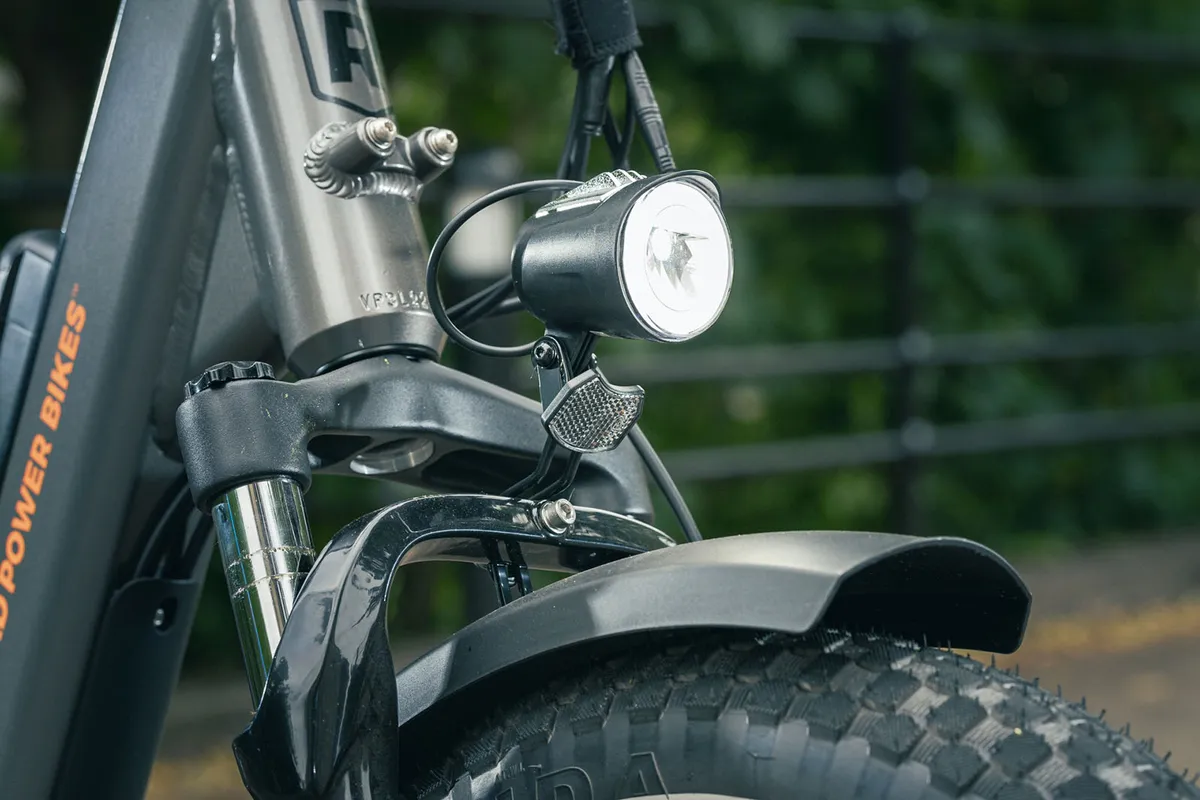
Many electric bikes include front and rear lights powered by the central battery, so you don’t need to purchase these separately and worry about keeping them charged.
On some electric bikes, the rear light also serves as a brake light, while on others there are turn indicator lights.
How do you charge an electric bike?
To charge the battery of your electric bike, you’ll need to use the supplied charger to plug it into the mains.
Some electric bikes have a removable battery, making it relatively simple to take the battery indoors for charging. Other ebikes have a non-removable battery, so you need to be able to get your ebike close enough to an electricity supply to plug in the charger.
If you have a range extender battery, you can charge that off the bike then attach it to the ebike once it’s charged.
Make sure you use a charger that’s compatible with your ebike, in terms of voltage and amperage, because using an incorrect charger is a major cause of electric bike battery fires.
How far can an electric bike go?
Although some electric bikes can give you 100 miles of range or more, around 50 is more typical and some electric folding bikes can have a range below 20 miles on a full charge.
A host of factors influence the range you’ll get from your ebike. The major one is the size of the battery, which is usually measured in watt-hours (Wh), although you may see an ampere-hour (Ah) figure quoted, which needs to be multiplied by the system voltage to give you a Wh figure.
The assist level you choose, how hilly your ride is, your weight and fitness level, wind and even the outdoor temperature can all influence electric bike range.
How fast can an electric bike go?
The speed of electric bikes is often limited, depending on where you live.
If you live in the UK or the EU, the motor on an electric bike used on public roads has to be speed-limited to 25kph (15.5mph). You can go faster, for example when travelling downhill or if you’re a fit rider, but you won’t get motor assistance. If the ebike isn’t limited at this speed, it’s considered to be an electric moped and you need to register, tax and insure it and wear a moped-style helmet.
In the USA, legislation varies between states, but in general, there are three electric bike classes:
• Class 1 electric bikes require you to pedal and are speed-limited at 20mph.
• Class 2 electric bikes are also speed-limited at 20mph, but can be throttle-operated so that you don’t need to pedal.
• Class 3 electric bikes can assist up to 28mph and must have a speedometer. You can reach this speed by pedalling, while in some states a Class 3 ebike can use a throttle up to 20mph.
Rules in Australia are different again, with pedal-assist ebikes speed limited at 25kph as in Europe. You can also ride a throttle-operated ebike up to this speed, although the law requires it to have a less powerful 200-watt motor.
How much does an electric bike cost?
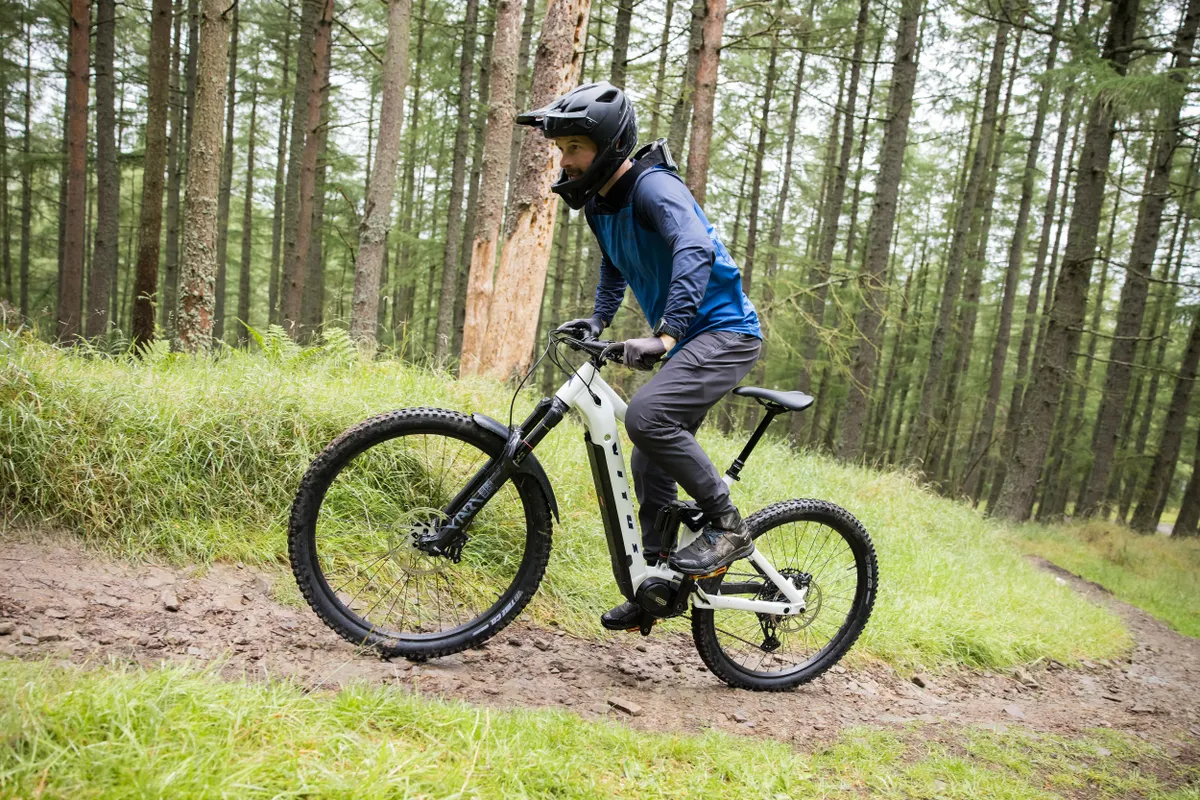
There’s a wide range of prices for electric bikes, depending on factors such as the quality of the frame and components, the make of the motor, the battery capacity and the intended use.
An electric mountain bike or road bike will usually be pricier than an electric hybrid or an electric folding bike. Although many fall within the £2,000 to £5,000 price range, you can find budget electric bikes that cost around £1,000, while some premium electric bikes cost 10 or more times that price.
Are throttle electric bikes legal in the UK?
Electric bikes that use a throttle are not legally considered as electric bikes in the UK. All electric bikes require you to pedal for the motor to provide assistance.
You can ride an electric bike with a throttle, but it’s regarded as a moped and, as with electric bikes that provide support to speeds above 25kph, it will need to be registered, taxed and insured.
What about electric bike conversion kits?
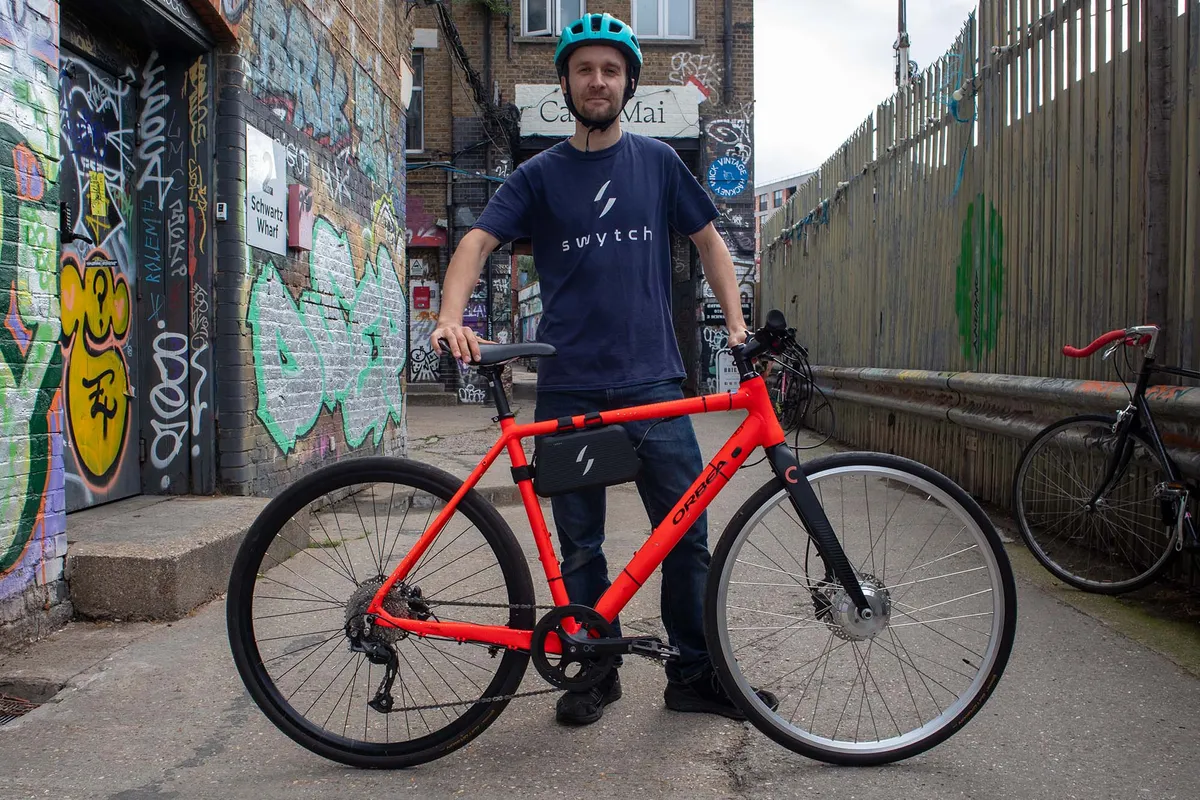
An electric bike conversion kit enables you to convert a standard bike to provide electric assistance. We have a detailed post on electric bike conversion kits, how they operate and our reviews of some popular models.
An electric bike conversion kit will need to conform to the electric bike laws where you ride. If you intend to convert a bike to electric power, make sure you buy a compliant kit.
Some kits are sold without batteries and if you purchase a battery separately, you need to make sure the battery is compatible with your motor and that the charger is too, to avoid the risk of fire or injury, or the ebike just not working.
